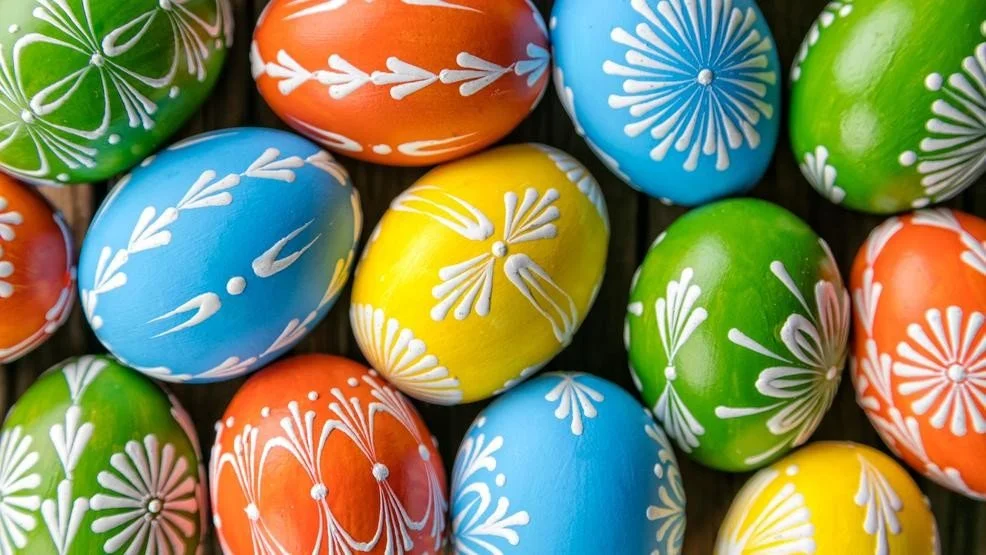Sham Al-Nassim: Five Thousand Years of Celebrating Spring with Fiseekh, Eggs and Onions
by Shahinda Abdalla
The arrival of spring in Egypt certainly does not go unnoticed. For about five thousand years now, we have been celebrating Sham Al-Nassim. Perhaps one of the most important festivals of the year in our history surviving from the Pharaonic era in 2700 BC to the present day. Back then, it was called the festival of Shemu which was the name given to the Season of Harvest or also known as the Season of Low Water referring to the season before the flooding of the Nile when the waters were low. Shemu in the Coptic language means ‘renewal of life’ and that is precisely what happens during this season. People come out not only to enjoy the abundance of green and blooming flowers, but they would also harvest all that has been growing in the months prior and begin the drying and storing processes to prepare for the rest of the year. This is the season the earth repays them for their efforts. And so the ancients liked to begin the season with a celebration; one that included three main components — fish, eggs and onions — all of which survive to this day as essential components of Sham Al-Nassim. This year Sham Al-Nassim falls on Monday April 17. Though it is not by any means a religious festival, Sham Al-Nassim is observed on the first day of Khamaseen (local sandy winds) which coincides with the Monday following Coptic Orthodox Easter. The evolution of the name of the spring festival from the Coptic Shemu to the Arabic Sham Al-Nassim is believed to reflect this as the name translates to the ‘Smelling of the Zephyrs’ (smelling of the west wind).
The smell of the west wind breeze isn’t the only thing you smell that day, fiseekh — fermented, salted and dried gray mullet — is rather pungent and if had indoors can stink up the house. The traditional process of preparing fiseekh entails drying the fish in the sun before preserving it in salt. The fish must sit pickling for at least a year. The process is quite elaborate with preparation techniques passed from father to son in certain families. The occupation has its own special name in Egypt: fasakhani. The reason we eat fiseekh is symbolic and goes back to ancient Egypt when this festival of spring first began. It was believed that offering fish to the gods would bring on a good harvest as salted fish symbolized fertility and welfare. Today, fiseekh is known to be produced mainly in Menoufia, in the north-east of Egypt. In recent years, there have been increasing concerns about the consumption of fiseekh with increasing reports of food poisoning leading to deaths. This is why when getting fiseekh, you must be very careful and ensure that the vendor is a reputable and trusted one. Increasingly, many opt to eat smoked herring (ringa) instead of fiseekh.
Whether you opt for the fiseekh or ringa option, green onions are a must-have side. This too is an ancient ritual as it is believed that onions ward off evil spirits. On the eve of Sham Al-Nassim, the ancient Egyptians would place them under the pillows of their grandchildren to summon the god Sokar; the god of fertility, earth and death. Then right before dawn, people would head to the meadows on the banks of the Nile to watch the sunrise, bringing with them food and flowers, spending the entire day outside, smelling the fresh air, singing and dancing as they welcome spring with open arms. To this day, Sham Al-Nassim continues to be celebrated outdoors where families gather in their gardens or in public parks or beaches to enjoy a day in nature together.
Finally, no Sham Al-Nassim would be the same without coloring eggs. The ancients would paint, decorate and color eggs in numerous patterns. They would then write their wishes on these eggs, tuck them in baskets made of palm fronds or hang them on trees or the roofs of their houses in hopes that the gods would answer their wishes. It is fascinating how this practice of coloring eggs has remained not only in our culture but has spread to many others throughout the globe. Perhaps unsurprisingly as eggs in almost all cultures represent a potential that is yet to be born, a life that is yet to be created and a gift from the divine.
Wishing you and your loved ones a very abundant Sham Al-Nassim with copious amounts of painted eggs and perhaps not so copious amounts of fiseekh if you’re fasting for Ramadan the next day.


